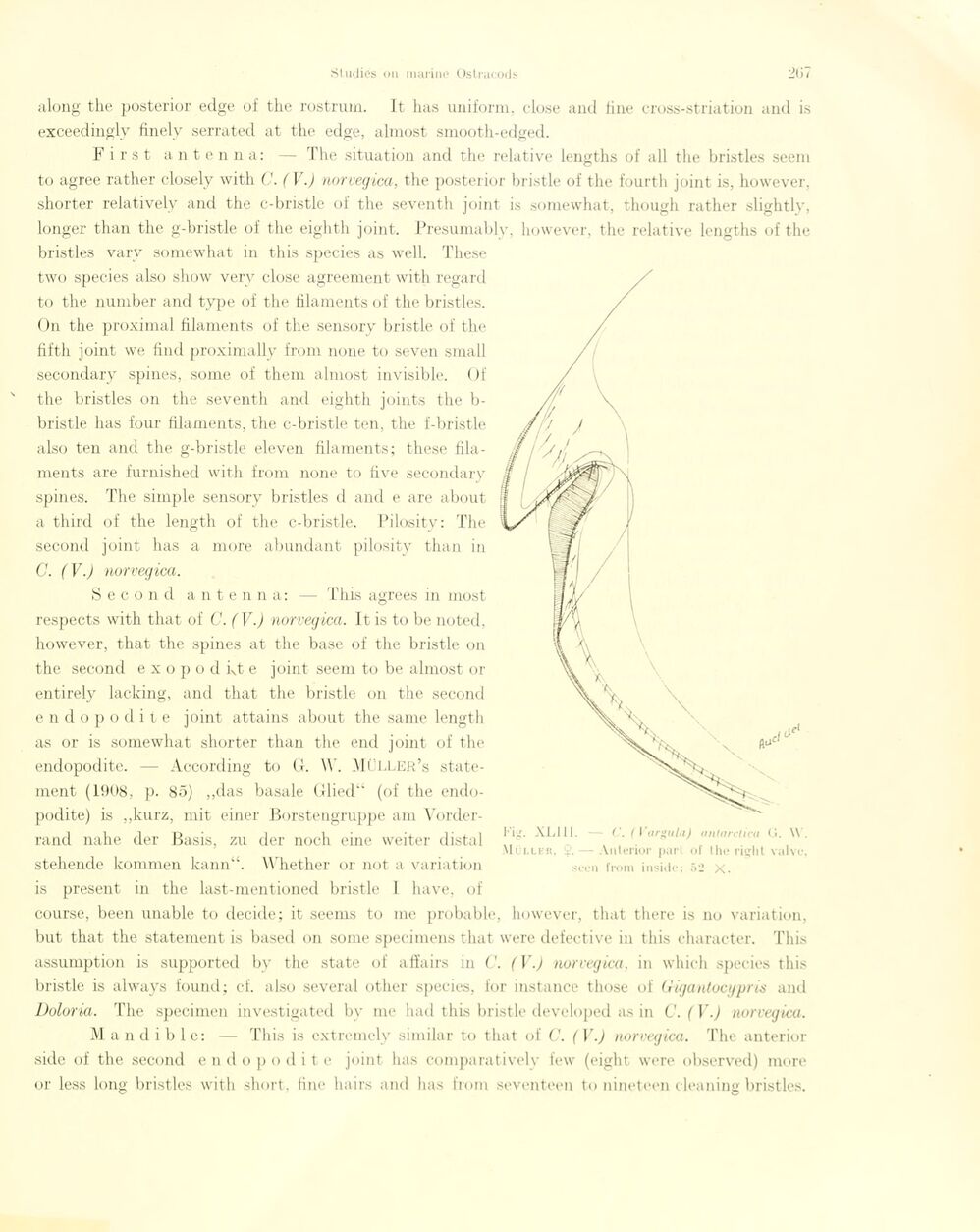
Full resolution (JPEG) - On this page / på denna sida - Sidor ...

<< prev. page << föreg. sida << >> nästa sida >> next page >>
Below is the raw OCR text
from the above scanned image.
Do you see an error? Proofread the page now!
Här nedan syns maskintolkade texten från faksimilbilden ovan.
Ser du något fel? Korrekturläs sidan nu!
This page has never been proofread. / Denna sida har aldrig korrekturlästs.
along tlie posterior edge of the rostrum. It has uniform, close and line cross-striation and is
exceedingly finely serrated at the edge, almost smooth-edged.
First antenna: — The situation and the relative lengths of all the bristles seem
to agree rather closely with C. (V.) norvegica, the posterior bristle of the fourth joint is, however,
shorter relativelv and the c-bristle of the seventh joint is somewhat, though rather slightly,
longer than the g-bristle of the eighth joint. Presumably, however, the relative lengths of the
bristles varv somewhat in this species as well. These
two species also show very close agreement with regard
to the number and type of the filaments of the bristles.
On the proximal filaments of the sensory bristle of the
fiftli joint we find proximally from none to seven small
secondary spines, some of them almost invisible. Of
the bristles on the seventh and eighth joints the b-
is present in the last-mentioned bristle I have, of
course, been unable to decide; it seems to me probable, however, that there is no variation,
but that the statement is based on some speci mens that were defective in this character. This
bristle is always found; cf. also several other species, for instance those of G-igantocypris and
Mandible: — This is extremely similar to that of C. ( V.) norvegica. The anterior
side of the second e n d o p o d i t e joint has comparativelv few (eight were observed) more
or less long bristles with short, fine hairs and has from seventeen to nineteen deaning bristles.
Second antenna: — This agrees in most
respects with that of C. (V.) norvegica. It is to be noted,
however, that the spines at the base of the bristle on
the second e x o p o d kt e joint seem to be almost or
entirely lacking, and that the bristle on the second
end op odite joint attains about the same length
as or is somewhat shorter than the end joint of the
endopodite. — According to G. W. MCller’s
statement (1908, p. 85) „das basale Glied“ (of the
endopodite) is „kurz, mit einer Borstengruppe am
Vorderrand nahe der Basis, zu der noch eine weiter distal
stehende kommen kann“. Whether or not a variation
a third of the length of the c-bristle. Pilosity: The
second joint has a more abundant pilosity than in
G. (V.) norvegica.
spines. The simple sensory bristles ti and e are about
bristle has four filaments, the c-bristle ten, the f-bristle
also ten and the g-bristle eleven filaments; these
filaments are furnished with from none to five secondary
Fig. XLIII. — C. ( l’tirgula) antarctica ti. W.
Mille«. Ç. — Anterior part of the right valve,
seen from inside; 52 X.
assumption is supported by the state of affaire iu C. (V.) norvegica, in which species this
<< prev. page << föreg. sida << >> nästa sida >> next page >>